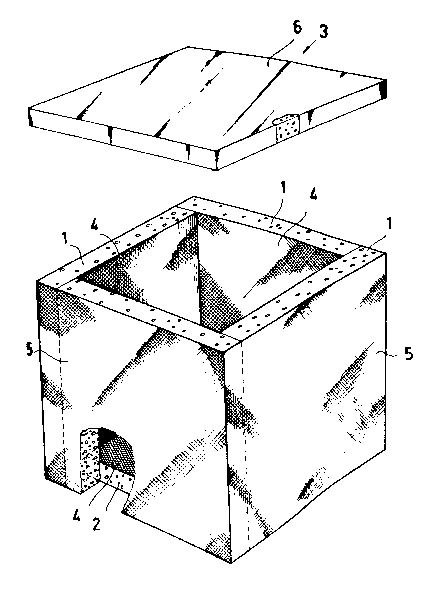Une partie des informations de ce site Web a été fournie par des sources externes. Le gouvernement du Canada n'assume aucune responsabilité concernant la précision, l'actualité ou la fiabilité des informations fournies par les sources externes. Les utilisateurs qui désirent employer cette information devraient consulter directement la source des informations. Le contenu fourni par les sources externes n'est pas assujetti aux exigences sur les langues officielles, la protection des renseignements personnels et l'accessibilité.
L'apparition de différences dans le texte et l'image des Revendications et de l'Abrégé dépend du moment auquel le document est publié. Les textes des Revendications et de l'Abrégé sont affichés :
| (12) Brevet: | (11) CA 1290163 |
|---|---|
| (21) Numéro de la demande: | 1290163 |
| (54) Titre français: | METHODE DE COMPOSTAGE DE DIVERS DECHETS ORGANIQUES ET COMPOSTEUR |
| (54) Titre anglais: | PROCEDURE FOR COMPOSTING VARIOUS ORGANIC WASTES AND COMPOSTER FOR IMPLEMENTING THE PROCEDURE |
| Statut: | Périmé et au-delà du délai pour l’annulation |
| (51) Classification internationale des brevets (CIB): |
|
|---|---|
| (72) Inventeurs : |
|
| (73) Titulaires : |
|
| (71) Demandeurs : |
|
| (74) Agent: | ROBIC AGENCE PI S.E.C./ROBIC IP AGENCY LP |
| (74) Co-agent: | |
| (45) Délivré: | 1991-10-08 |
| (22) Date de dépôt: | 1986-09-03 |
| Licence disponible: | S.O. |
| Cédé au domaine public: | S.O. |
| (25) Langue des documents déposés: | Anglais |
| Traité de coopération en matière de brevets (PCT): | Non |
|---|
| (30) Données de priorité de la demande: | ||||||
|---|---|---|---|---|---|---|
|
ABSTRACT OF THE DISCLOSURE
A procedure for composting organic wastes, wherein the waste
masses are placed in a composter. A drawback of all
procedures of prior art for composting wastes is that
altogether too much air is conducted into the composter
through gaps and holes in its walls, whereby it either dries
out easily or freezes in winter. In the procedure of the
invention, the requisite breathing taking place through the
walls of the composter is managed in a controlled manner by
means of varying the material and thickness of the walls.
The invention also concerns a composter for implementing the
procedure, consisting of a space enclosed with walls,
a bottom and a cover and in which the wastes are placed. The
walls, at least, consist of thermal lagging sheets permeable
to air, such as underdrain plastic sheets.
Note : Les revendications sont présentées dans la langue officielle dans laquelle elles ont été soumises.
Note : Les descriptions sont présentées dans la langue officielle dans laquelle elles ont été soumises.

2024-08-01 : Dans le cadre de la transition vers les Brevets de nouvelle génération (BNG), la base de données sur les brevets canadiens (BDBC) contient désormais un Historique d'événement plus détaillé, qui reproduit le Journal des événements de notre nouvelle solution interne.
Veuillez noter que les événements débutant par « Inactive : » se réfèrent à des événements qui ne sont plus utilisés dans notre nouvelle solution interne.
Pour une meilleure compréhension de l'état de la demande ou brevet qui figure sur cette page, la rubrique Mise en garde , et les descriptions de Brevet , Historique d'événement , Taxes périodiques et Historique des paiements devraient être consultées.
| Description | Date |
|---|---|
| Inactive : CIB expirée | 2020-01-01 |
| Inactive : CIB de MCD | 2006-03-11 |
| Le délai pour l'annulation est expiré | 1999-10-08 |
| Lettre envoyée | 1998-10-08 |
| Accordé par délivrance | 1991-10-08 |
Il n'y a pas d'historique d'abandonnement
| Type de taxes | Anniversaire | Échéance | Date payée |
|---|---|---|---|
| TM (catégorie 1, 6e anniv.) - générale | 1997-10-08 | 1997-10-02 |
Les titulaires actuels et antérieures au dossier sont affichés en ordre alphabétique.
| Titulaires actuels au dossier |
|---|
| ROLATE OY |
| Titulaires antérieures au dossier |
|---|
| SEPPO PELTOMAA |